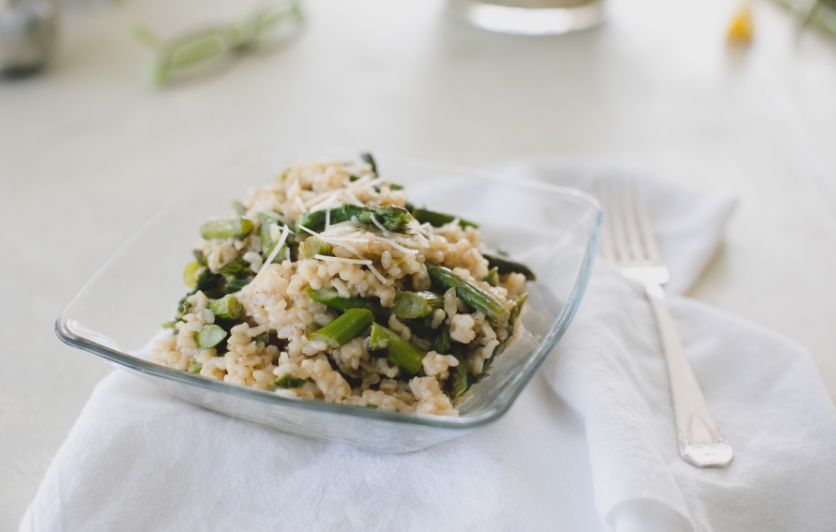Asparagus, Vegetable Royalty

Asparagus, the perennial garden plant is a member of the lily family, making its grand entrance in the spring.
Asparagus has been considered a delicacy since ancient times. The perennial garden plant is a member of the lily family, making its grand entrance in the spring. In California, the first arrivals may be picked as early as February, with the growing season generally running from April through May. The Midwest and East have access to the vegetable through the month of July.
There are three varieties of asparagus, the most common being green in color. The lesser known white version has a more delicate flavor and tender texture. Because this variety is grown underground to inhibit the development of chlorophyll, it is the most labor intensive of the three. The lack of chlorophyll gives the plant its white color. Just as the tip begins to poke through the surface of the soil, this asparagus needs to be picked and quickly placed into a dark box to ensure that it will retain its white hue. Interestingly, when exposed to sunlight the color will change from white to pink. This variety is more expensive and is often found in canned form, although select gourmet shops will occasionally carry the fresh version. The third type is purple in color, with a flavor that is sweet and fruity.
Asparagus has many health benefits and is an excellent source of vitamins C, E, K, B2, folate, copper and selenium. It also supplies a good amount of manganese, phosphorous, niacin, potassium, vitamin A, B6, zinc, iron, calcium, magnesium and protein. The vegetable contains no cholesterol, minimal fat and is low in calories. Five spears, which amount to approximately 1⁄2 cup, contain only 20 calories.
Purchasing certified organically grown vegetables is always advised as they are less likely to contain pesticides and other contaminants. If unable to find certified organic, look for those with the USDA organic logo marking on the tag. Make sure to find stalks that are rounded, avoiding those that are fat or twisted. Bunches with firm thin stems and deep-green or purplish closed tips are the perfect choice. The cut end should not be woody, although a bit of woodiness at the base will prevent the stalk from drying out.
There are a number of ways to cook your asparagus:
Steaming—Bring an inch or two of water to a boil in a pot that can accommodate a steamer basket. It is important that water does not seep into the basket. Cover pot and steam until tender.
Grilling—Lightly brush spears with oil. Sprinkle with salt and pepper. Grill on medium-high heat until tender.
Blanching—Place asparagus in a large saucepan of boiling water and cook for five minutes (depending on the thickness). Plunge the spears into a large bowl of ice water for about one minute to stop the cooking process.
For a simple recipe: Trim the tough ends of your asparagus and place on a baking sheet lined with foil or parchment paper. Drizzle just enough olive oil to coat the spears. The amount of oil will vary with the number of spears used. Season with salt and freshly ground black pepper to taste. Roast in the oven at 400 degrees until the stalks begin to shrivel and become tender, about 10 minutes, depending on the thickness. Drizzle with fresh lemon juice, sprinkles of finely grated lemon zest and shaved Parmigiano-Reggiano cheese. Enjoy!
Asparagus can be a culinary adventure. Try adding them to salads; cut into small pieces and mixed with risotto; tossed with your favorite pasta, olive oil and fresh herbs; as an addition to omelets for flavor, color and texture; with a stir-fry; or as a tummy-warming cream of asparagus soup. It is one vegetable that may be served at room temperature or chilled and still retain its flavor.
It has been noted that Emperor Caesar Augustus had a saying about his favorite vegetable that translates to “Faster than cooking asparagus,” or in our modern-day vernacular, “Get going already!” Perhaps that was derived from the fact that he employed an elite military unit that procured asparagus for him, which the emperor then gave to his fastest runners who carried the fresh spears into the Alps where they could be frozen to use at a later time. All hail the mighty asparagus, the food of kings!





